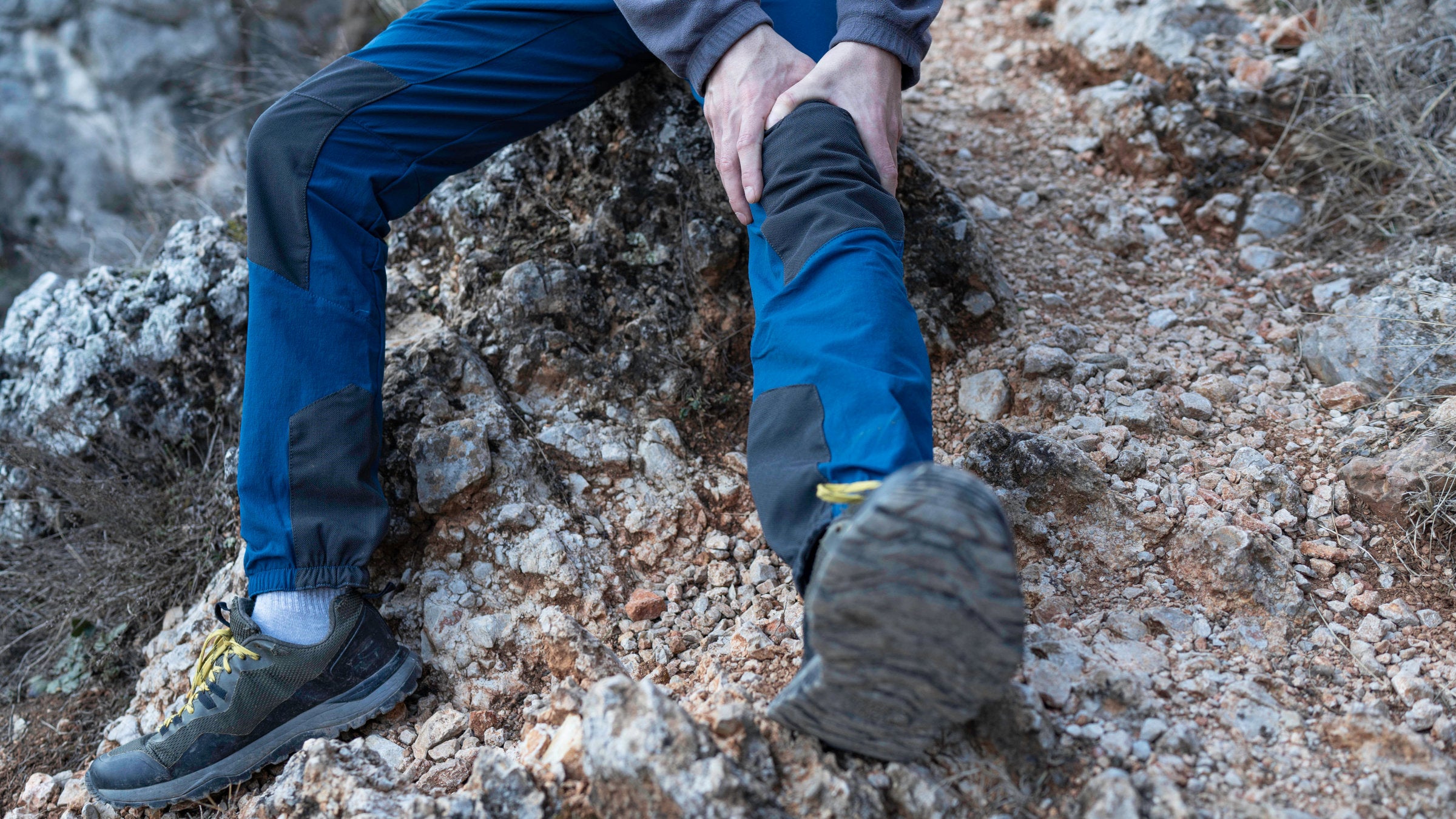Shin Splints Can Derail Your Hike. Here's How to Prevent Them.

Shin splints and other lower-limb strains can derail a hike. (Photo: Gorica Poturak / iStock via Getty)
Ever feel shin pain while walking up and down hills? You might have developed shin splints, a common type of overuse injury that arises from doing too many miles when your body isn’t ready for them. And learning how to prevent shin splints before they strike can save you a lot of pain.
Shin splints are inflammation of the muscle and tissue on the outside of the shinbone. These muscles help lift your toes while walking and control the speed of bringing the foot back to the ground after the heel makes contact. When the muscle and tissue become inflamed, pain and discomfort occur, especially while hiking uphill and downhill. Although they’re a common hiking injury, you can avoid them with some easy exercises and stretches. Even if you’re not prone to them, these exercises will offer loads of benefit for the lower leg muscles. Read on to learn more about how to prevent shin splints.
Prevent Shin Splints by Strengthening Your Muscles
Try any of the exercises below to build strong shin muscles and reduce your risk of overuse injuries. These exercises work perfectly as a part of a warmup series or if you’re resting between other exercises during a workout. For all exercises listed, perform three sets of 15 three to four times per week.
Standing Toe Raises
This exercise will isolate and strengthen the big shin muscle, tibialis anterior, that hikers and runners need for foot control. This is the easiest of the three movements and a great place to start building shin muscle strength.
- Stand near a countertop for balance support.
- Without shifting your hips backward, keep your heels down and raise your toes as high as possible. The motion is like taking your foot off a gas pedal.
- With control, lower your feet back to the ground.
Heel Walks
This exercise will focus on endurance for the same big shin muscle and help build the strength needed for logging uphill climbs and the foot control necessary for descents.
- Use a hallway wall or countertop for support if needed. Contract your shin muscle to bring your toes and balls of your feet up in the air.
- Keeping your toes up and heels down, walk on your heels without letting the toes drift down toward the floor. Continue for 15 feet.
Elevated Toe Raises
Because of this exercise’s increased range of motion and required control, it is the hardest of the three. It helps build a greater range of motion for the foot, which maintains strength and foot control. It also helps manage terrain changes on a trail.
- Find a step 6 to 8 inches in height. Facing away from the step, place your heels a few inches back from the edge, so your mid-foot and toes are hanging off.
- From this position, raise and lower your toes as far as possible while using the heel as a pivot point.
Heel Sit
Great for unwinding after a long hike or after the exercises above, the heel sit is perfect for stretching the big shin muscle.
- To stretch the shin muscle, kneel on the ground and sit on your heels with your feet pointed straight behind you. Consider using a yoga block or bolster like a rolled-up jacket or pillow, to sit on, which might make this stretch easier.
- Spend 20 seconds in this stretch and repeat for a total of three times, repeating two to three times per day.
On-The-Hike Pain Relief
If you are experiencing shin pain during your hike, try this massage technique using your trekking pole: With a firm but comfortable pressure, glide your pole along the outside of the shin bone from below the knee to above the ankle. Apply consistent pressure as you move the trekking pole along the belly of the tibialis anterior muscle. Spend two to five minutes performing this massage once or twice per day.
Lee Welton is a physical therapist assistant and personal trainer in Southeast Idaho. He thru-hiked the Pacific Crest Trail in 2018 and has trekked through the Dolomites in Italy. He can typically be found hiking and exploring the trails in Idaho and Wyoming. For more information, videos, and resources from Welton, visit trailsidefitness.com.